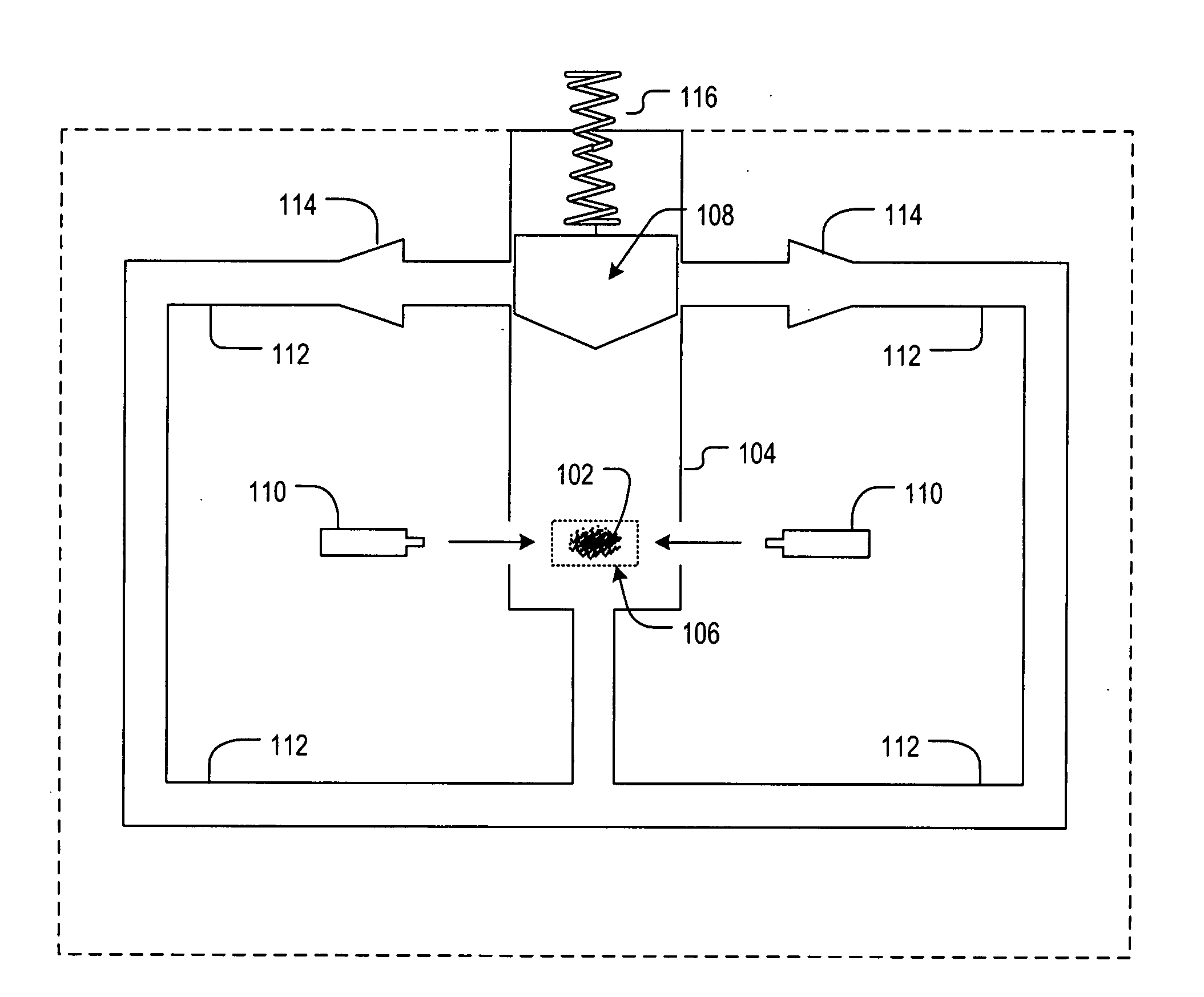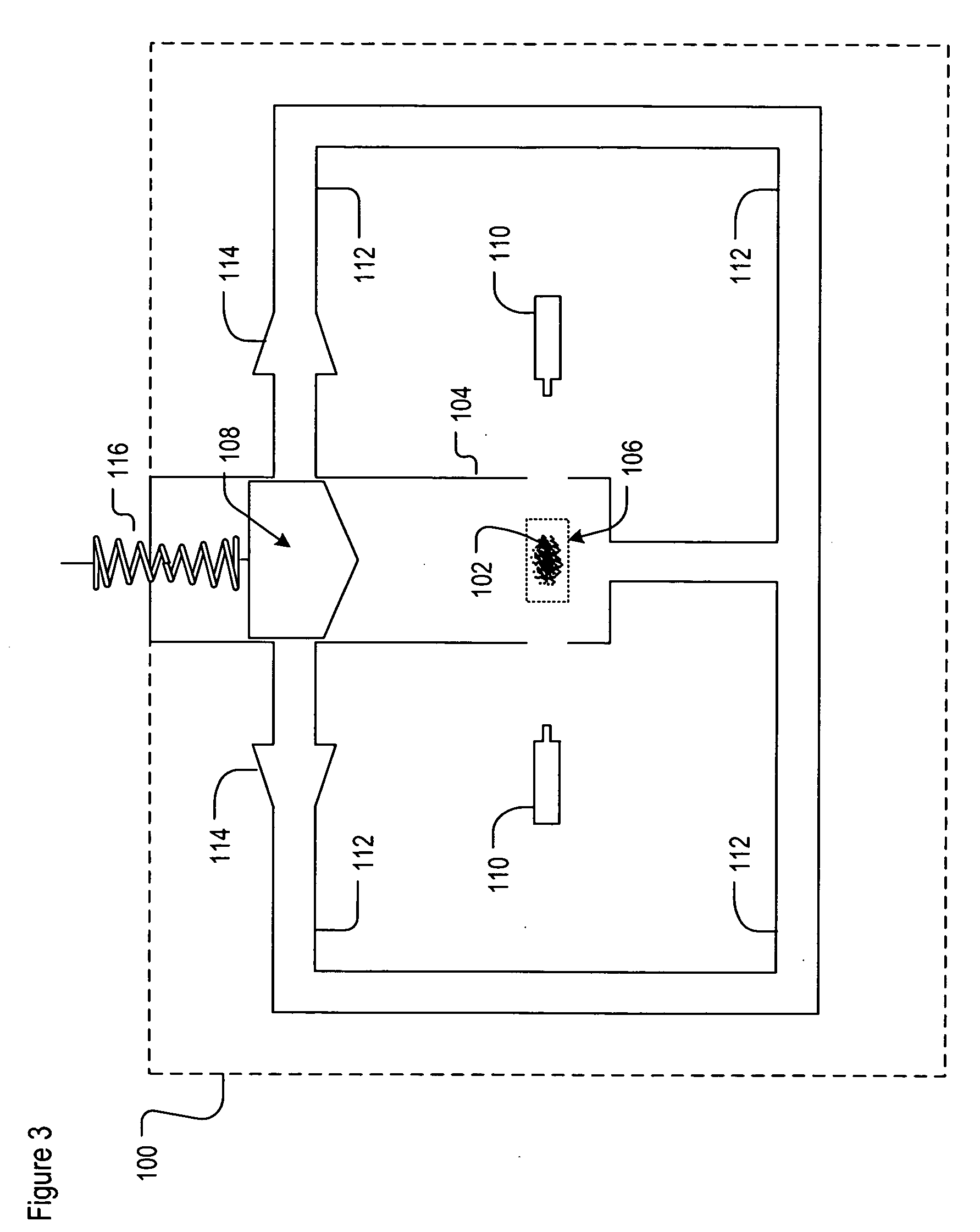Apparatus comprising of propulsion system
- Summary
- Abstract
- Description
- Claims
- Application Information
AI Technical Summary
Benefits of technology
Problems solved by technology
Method used
Image
Examples
Embodiment Construction
[0051] This Detailed Description proceeds with Section 1.1, which provides a description of propulsion system 100 and a method for propulsion in accordance with the illustrative embodiment of the present invention. Section 1.2 discloses a vehicle that incorporates propulsion system 100. The remaining sections, which include Sections 2.1-2.4 and 4 provide a theoretical development for propulsion system 100 and performance estimates.
1.1 Propulsion System 100
[0052]FIG. 3 depicts propulsion system 100 in accordance with the illustrative embodiment of the invention. Propulsion system 100 includes particles 102, chamber 104, piston 108, source(s) of electromagnetic radiation 110, return line(s) 112, and pump(s) 114, interrelated as shown.
[0053]FIG. 7 depicts method 700 for propulsion, which can be used in conjunction with propulsion system 100. In accordance with operation 702 of method 700, a plurality of particles are confined.
[0054]FIG. 3 depicts propulsion system 100 at the beginn...
PUM
 Login to View More
Login to View More Abstract
Description
Claims
Application Information
 Login to View More
Login to View More - R&D
- Intellectual Property
- Life Sciences
- Materials
- Tech Scout
- Unparalleled Data Quality
- Higher Quality Content
- 60% Fewer Hallucinations
Browse by: Latest US Patents, China's latest patents, Technical Efficacy Thesaurus, Application Domain, Technology Topic, Popular Technical Reports.
© 2025 PatSnap. All rights reserved.Legal|Privacy policy|Modern Slavery Act Transparency Statement|Sitemap|About US| Contact US: help@patsnap.com



